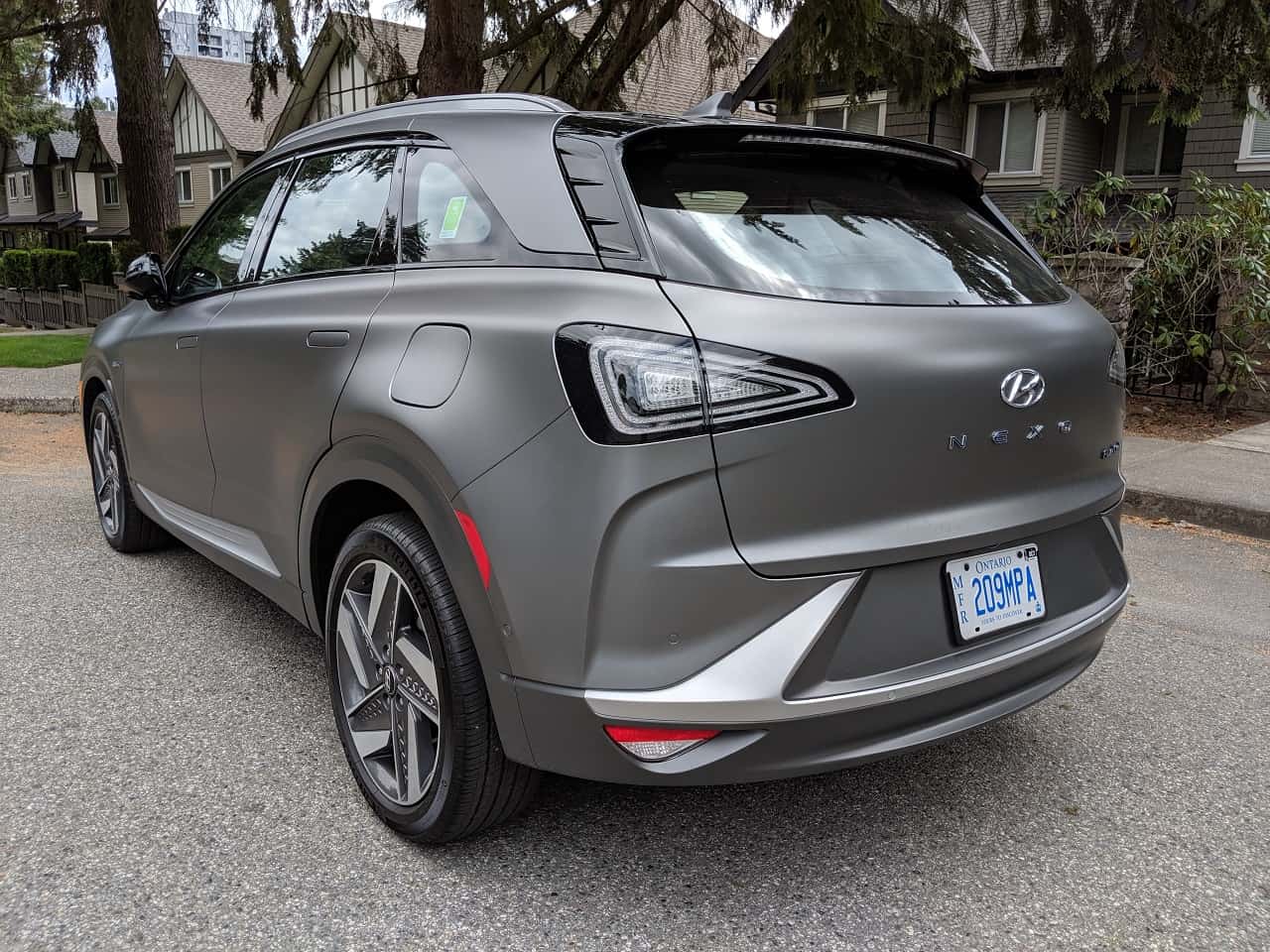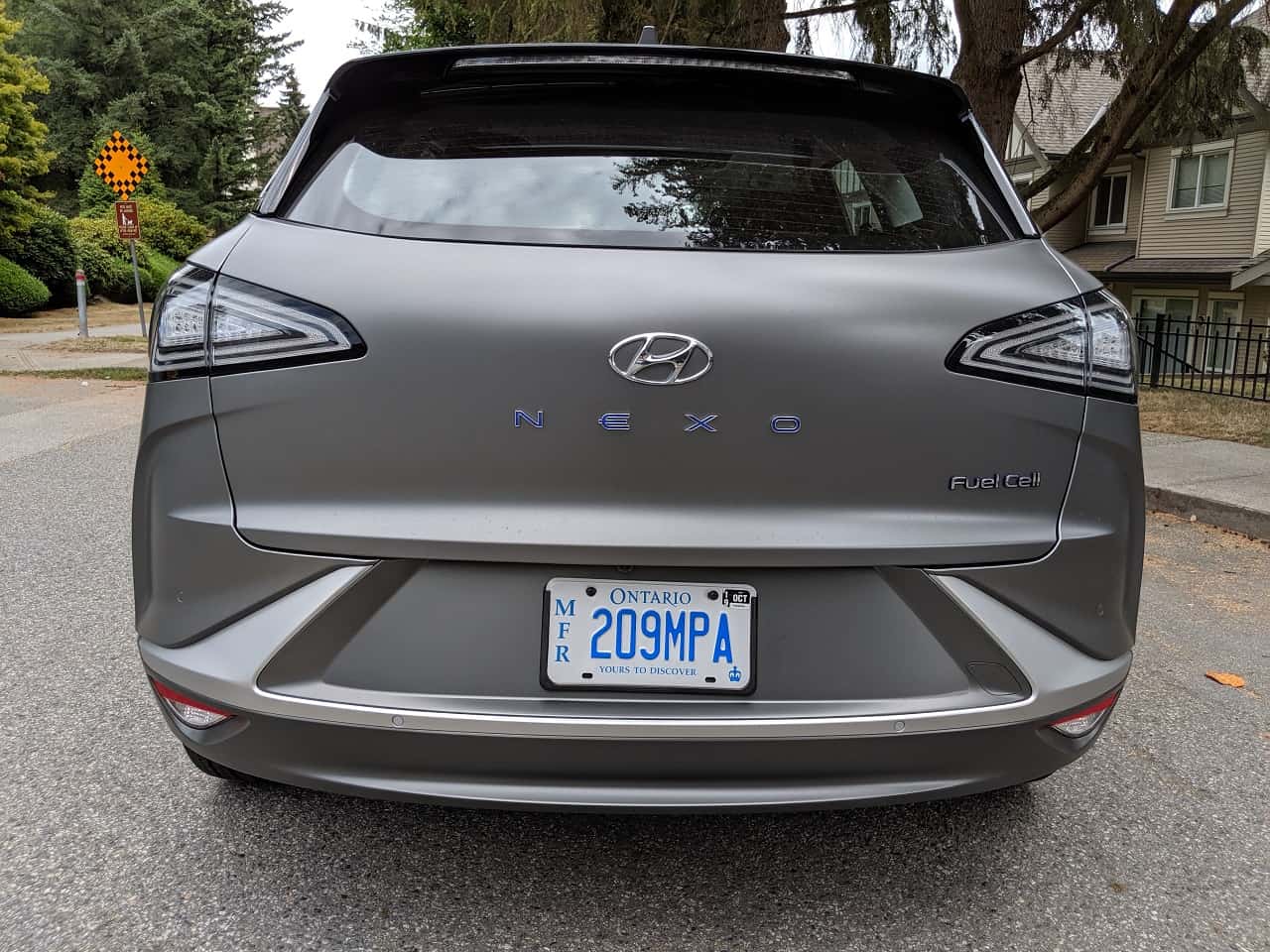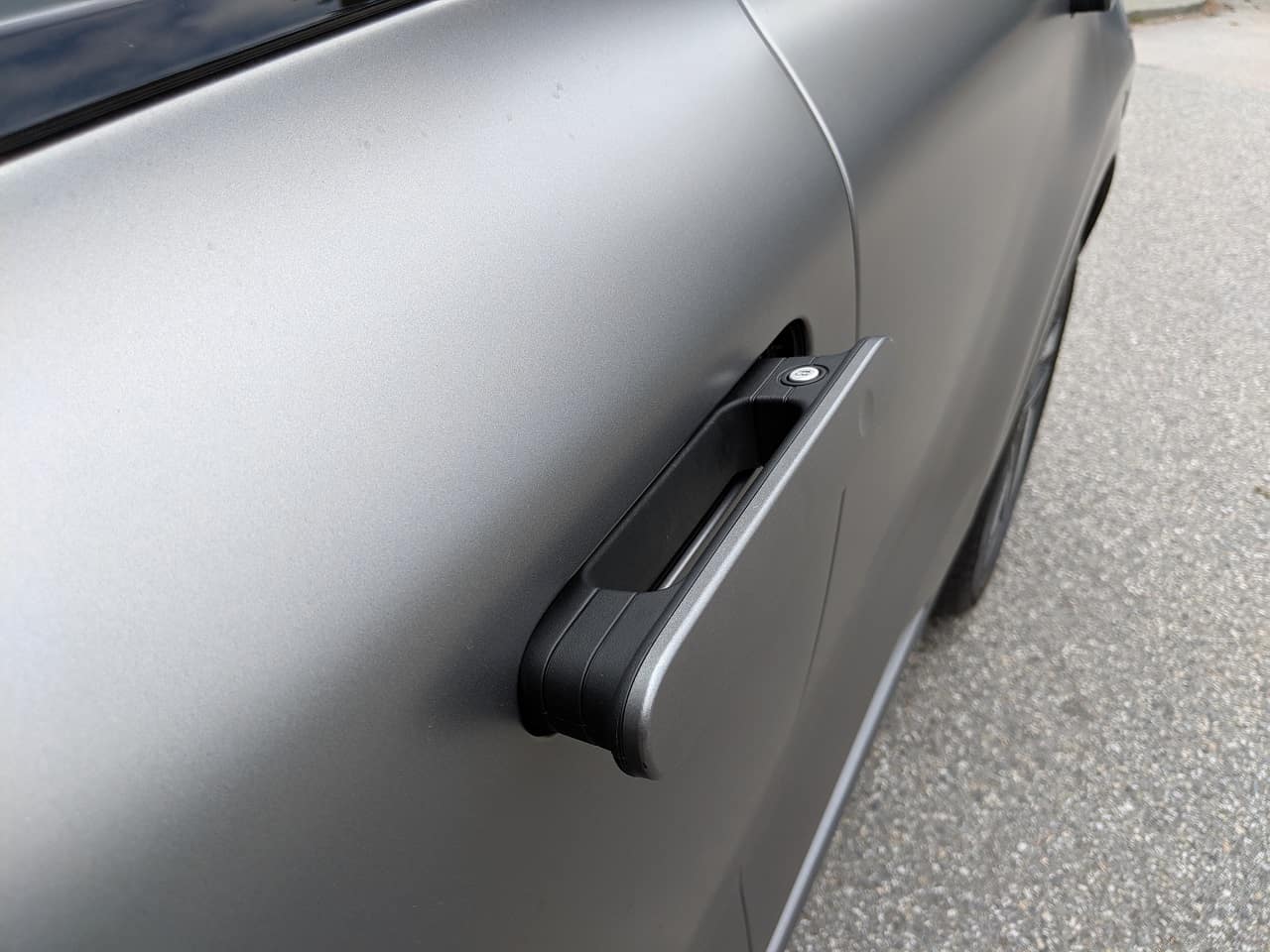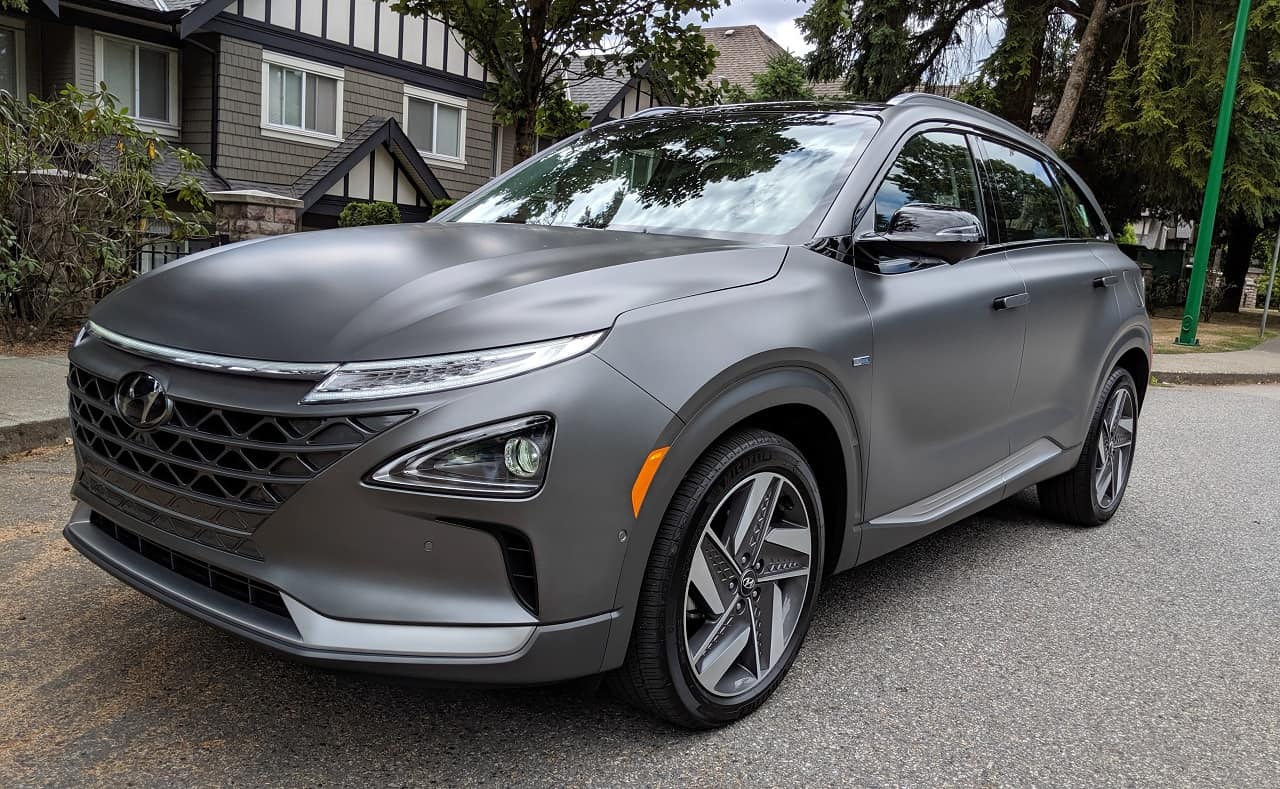There had been talks of a future where a lot of our daily energy use would be supplied by hydrogen, automakers were promising us a future full of hydrogen powered vehicles. Electric cars were on the radar but at the time battery tech wasn’t the greatest, but then electric battery technology started improving and the battle was between battery-powered vehicles and hydrogen fuel cell vehicles.
Toyota, the world’s largest automaker, was spending billions on hydrogen fuel cell research and then came Tesla and put electric vehicles on the map. Even Toyota recently announced they’ll finally start producing fully electric vehicles, but all is not lost, as hydrogen vehicles might still have a chance.
I actually used to read up a lot on hydrogen fuel cell vehicles about a decade or so ago, I’ve forgotten most of what I learned back then, as there really wasn’t a market for hydrogen vehicles and I kind of lost interest. I used to believe hydrogen would win over battery-electric vehicles (BEV), and I still believe that… in the long run. I personally think hydrogen fuel cell vehicles have a future and they might even be the winner, with BEV still having a side role, maybe like gasoline and diesel-powered vehicles. Because, if I recall correctly, you can make hydrogen at home with proper equipment (which might be in the cards in the far future).
Currently there are three hydrogen fuel cell vehicles on the market in North America, if I’m not mistaken, and even those vehicles are not offered in all markets. There’s the Toyota Mirai, Honda Clarity fuel cell, and the latest Hyundai Nexo.
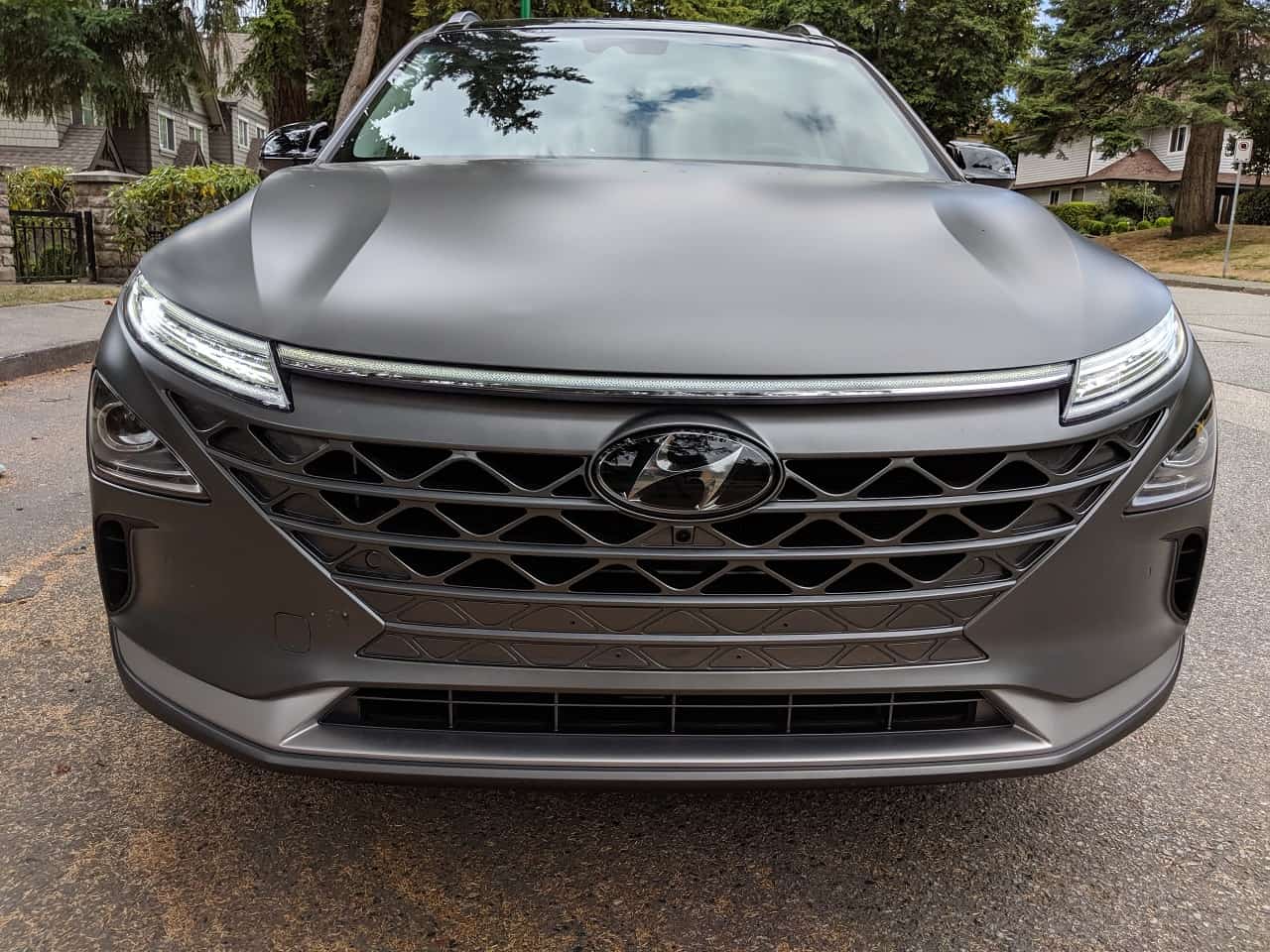
Last week we had the opportunity to test out the 2019 Hyundai Nexo hydrogen fuel cell for a few days. Hyundai is doing a great job of offering all sorts of “alternative fuel” vehicles. In addition to gasoline powered vehicles, they offer hybrids, plug-in hybrids like the Sonata PHEV and Ioniq PHEV, fully electric cars like the Ioniq EV and Kona EV, and now hydrogen fuel cell vehicles. They have all the bases covered.
Prices
In Canada, the 2019/2020 Hyundai Nexo comes in one trim, with a price tag of $73,000 plus $1,905 for Freight & PDI. Like electric cars, there are government rebates for hydrogen powered vehicles, however, the Hyundai Nexo doesn’t qualify for any incentives due to its starting price, which is higher than the maximum price cap of $55,000 for the incentive.
The Hyundai Nexo isn’t a cheap vehicle by any means, but it is a new technology (hydrogen vehicles have been around for a while but there are only a handful of them offered, with very limited availability). It costs Hyundai a lot more than $75k to build one Nexo, the cost is around $250,000 – $275,000 per vehicle. So, in a way, it’s a steal.
Motors/Battery/H2 Capacity
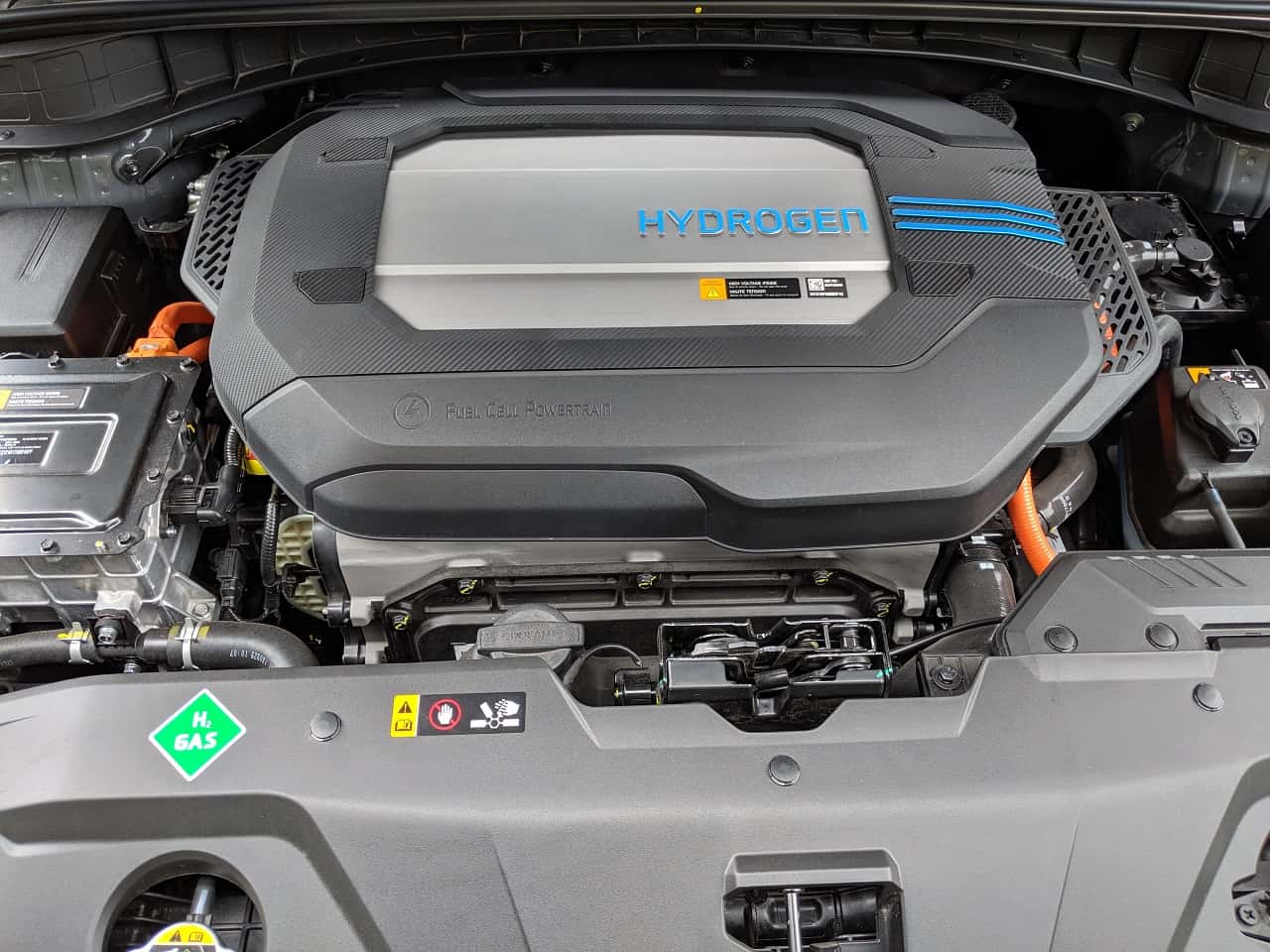
Unlike traditional battery electric vehicles, which the Nexo basically is but with a twist, the Nexo doesn’t rely fully on batteries. Instead, the liquefied hydrogen pumped into the three tanks is turned into electricity on demand, using the hydrogen fuel cells. The Nexo also comes with a battery pack, but it’s smaller than what you’d find in a dedicated BEV.
The hydrogen fuel cell system produces 90 kW of power while the battery pack sends 40 kW of power to the electric motor, for a combined output of 120 kW or 161 horsepower and 291 pound-feet of torque, for a range of 600 kilometers on a full tank. Hydrogen is pumped into the fuel cell stack along with oxygen, some sort of magic happens and electricity is created, which is used to power the electric motor. The byproduct of all of this magic is good old H2O, also known as water. The only exhaust fumes you get from the Hyundai Nexo is pure water and clean air, the air passing through the fuel cell stack is 99% cleaner than what entered it.
The 1.56 kWh battery pack is charged by regenerative braking, it sends power to the motor when you step hard on the accelerator.
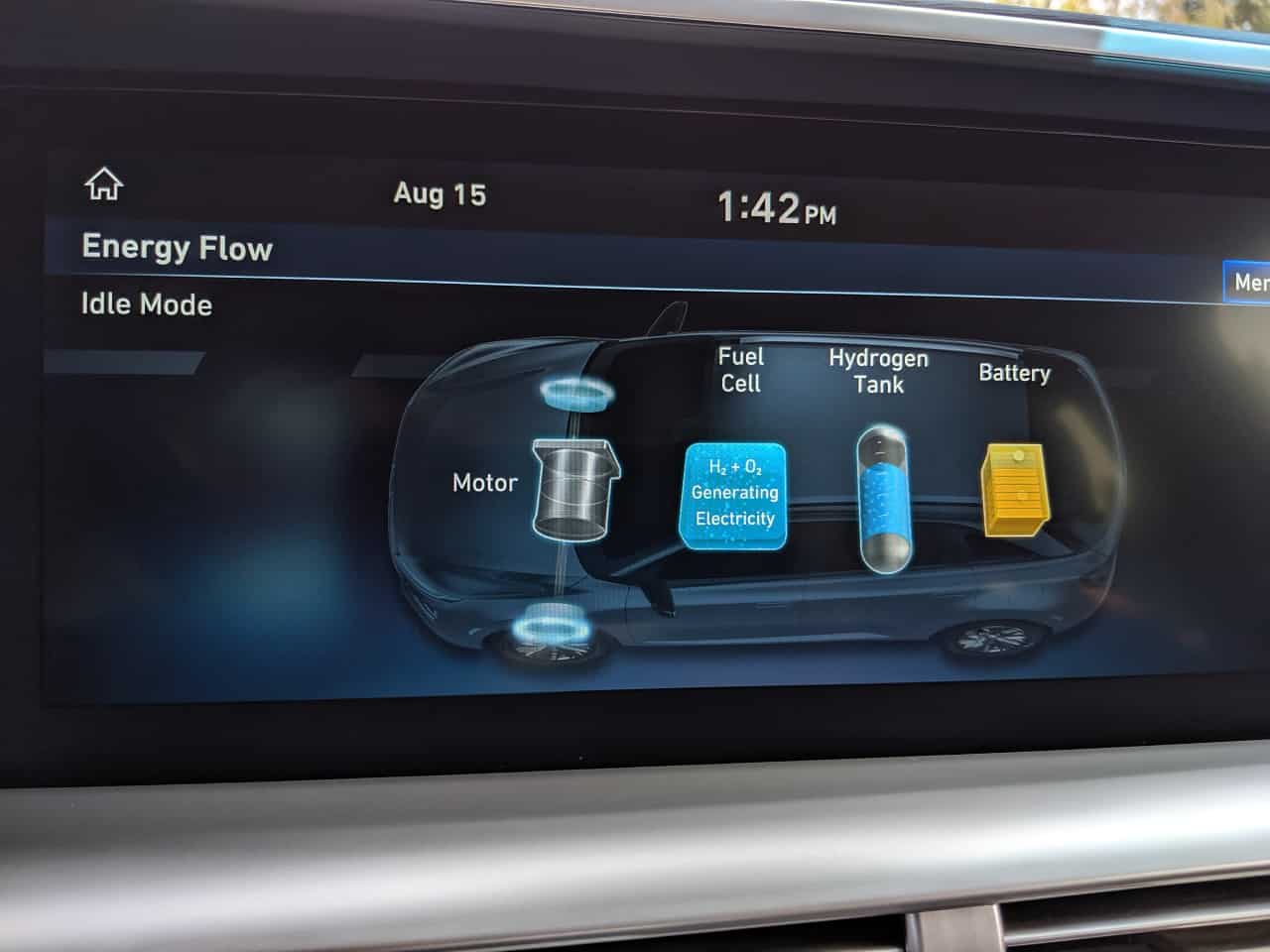
The Hyundai Nexo holds 6.3 kilograms of hydrogen in its three tanks, there are three tanks for better weight distribution and it also allows the tanks to be smaller and therefore not taking up all the space in the trunk. The biggest limiting factor for FCEVs (Fuel Cell Electric Vehicle), other than the initial cost of the vehicle itself, is the availability of hydrogen. In our city, there’s only one gas station that carries H2 and it’s over a 90-minute round trip, on a good day.
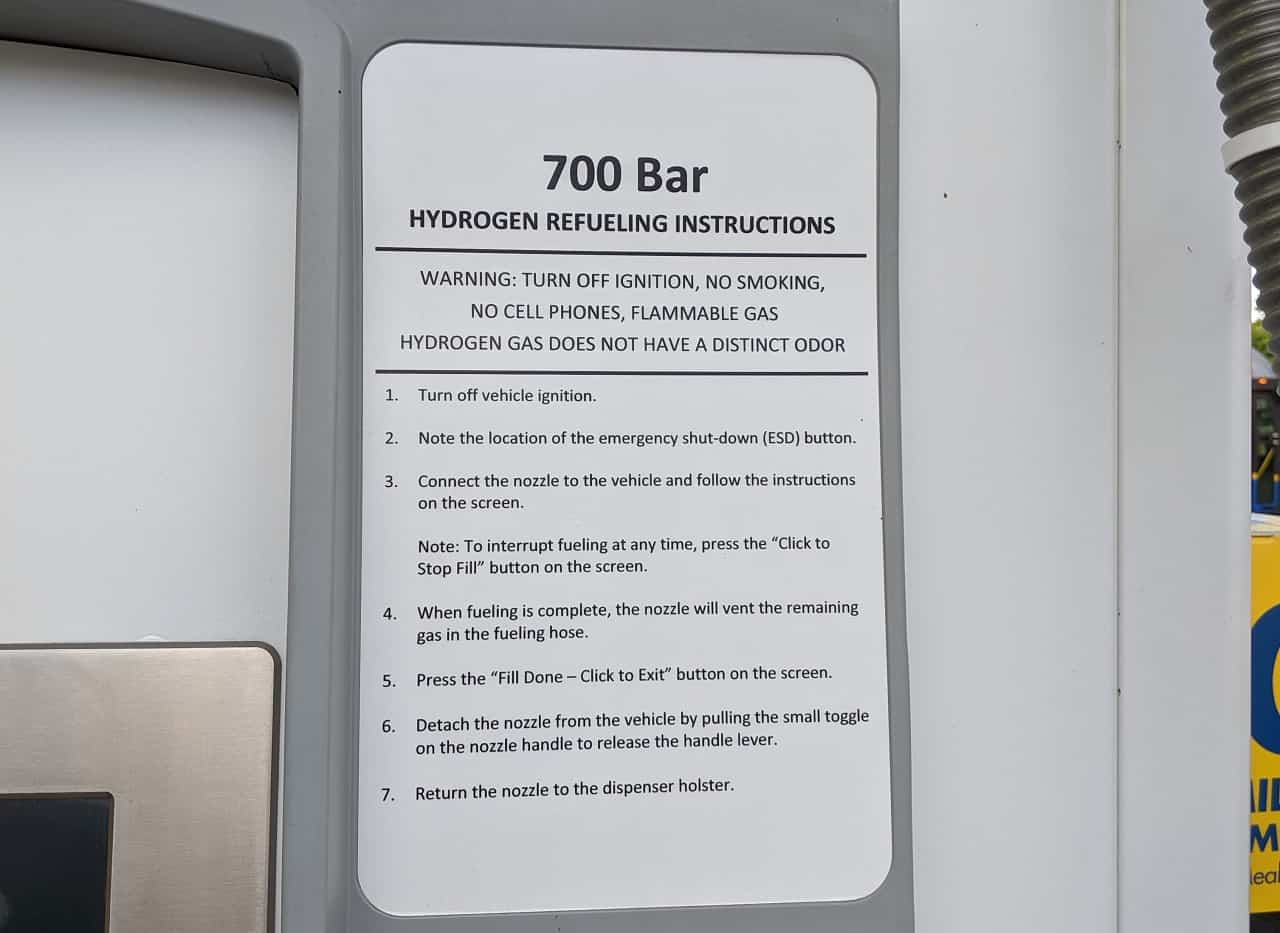
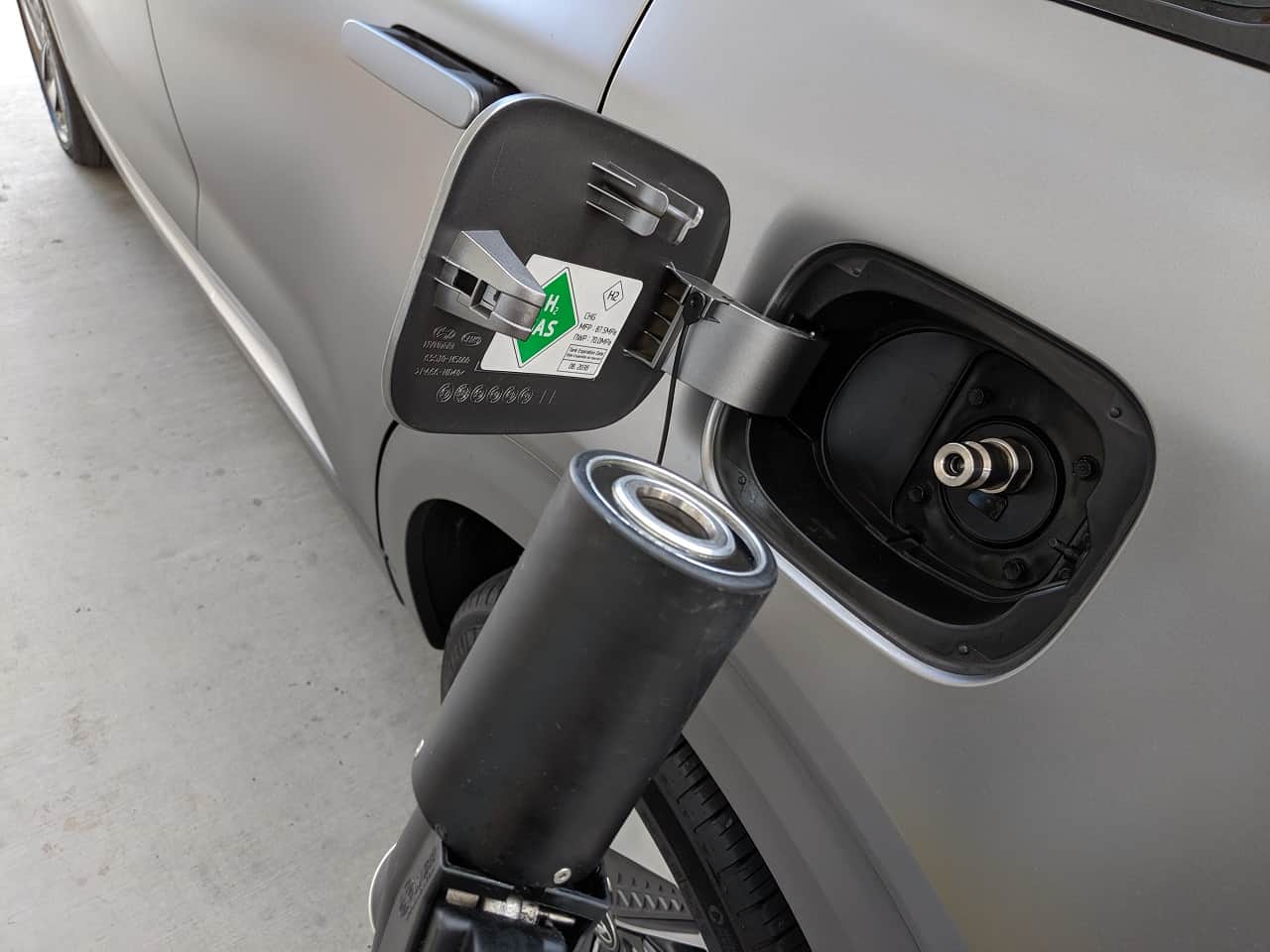
Filling up the Hyundai Nexo is, on the other hand, a breeze. Unlike electric cars, where you’ll need to find a fast charger with available spots, and still wait quite a while to charge up to 80% capacity, filling hydrogen is almost as fast as filling up your gas tank. Filling up hydrogen takes a few extra steps, and is a bit noisy at times, but to get to a full tank, it takes about 5 minutes in total; there is a bit of a learning curve to it, but after doing it once, it’s easy.
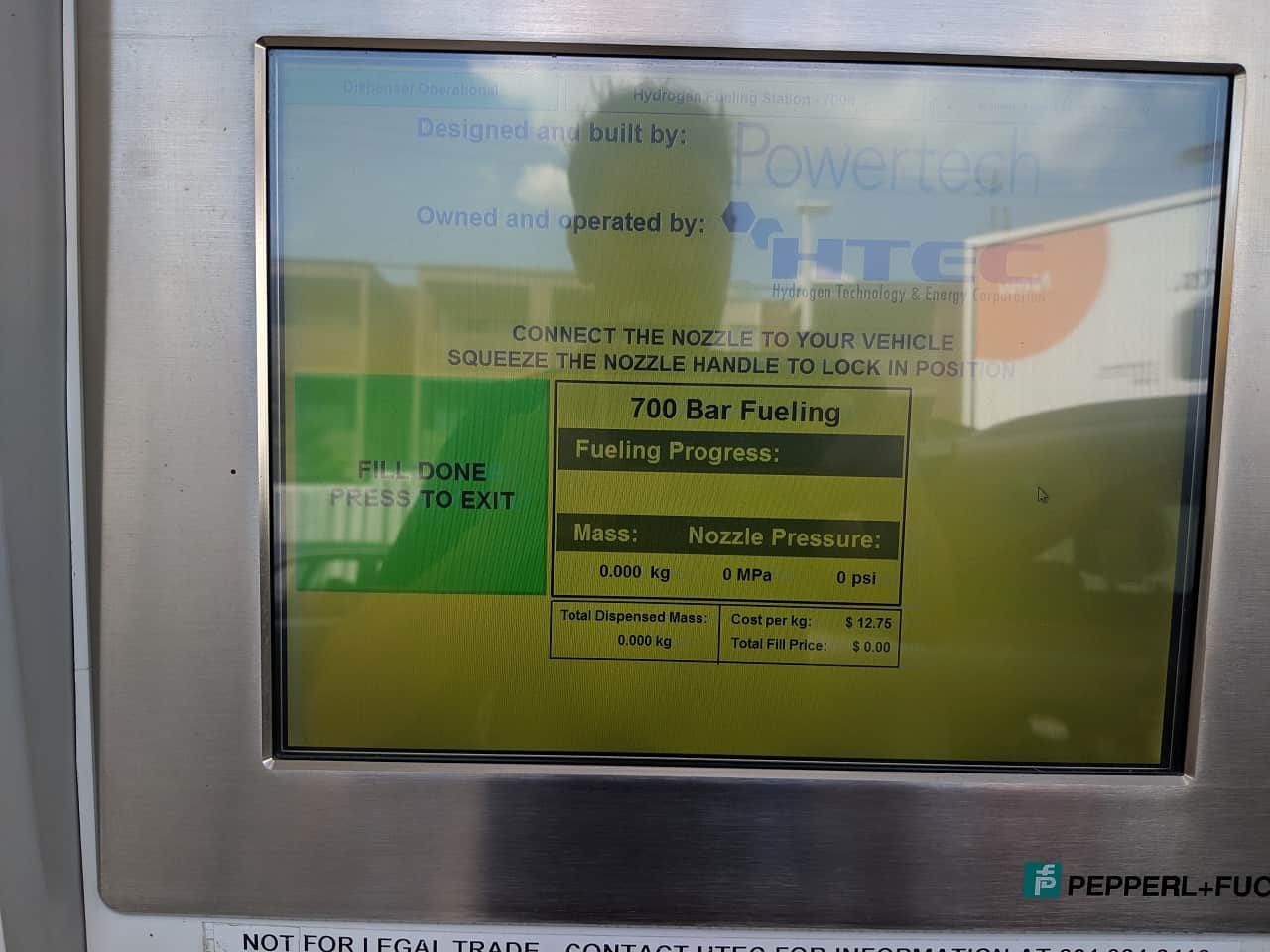
Currently hydrogen is free with the Nexo; in Vancouver, it’s priced at $12.75/kilo, which equates to $80.33 for 600 kilometers of driving. Our onboard computer showed 0.9 kg of H2 for 100 kilometers of driving, or $11.48/100 km. At the time of the review, gasoline was priced at $1.49/liter. A vehicle similar in size to the Nexo would consume about 10 – 12 liters/100 km, which would cost $14.90 to $17.88. In terms of pure savings at the pump, hydrogen isn’t that much cheaper than gasoline but prices might come down if there are more producers, maybe? Also, like I mentioned earlier, I believe hydrogen can be made at home (I’m sure there will be kits in the future for this and it will be safe to do so), which should/might reduce the cost.
Driving the Nexo
Driving the 2019 Hyundai Nexo FCEV feels like an electric car, which is what it is. However, it doesn’t have the same punch as Hyundai Kona Electric I reviewed a couple of weeks ago, because the Nexo does have a less powerful motor. The Nexo feels more like a vehicle that’s aimed at efficiency rather than fun. Hyundai claims a 0 – 100 km time of 9.5 seconds, but thanks to the instant torque, it feels quicker than that. I wouldn’t call it a boring car, I actually had a fun time driving the Nexo and despite its slow 0 – 100 km time, I felt it was a much faster car. It definitely doesn’t feel as slow as a gasoline vehicle with a similar 0 – 100 km time.
Driving around town and on the highway, the Nexo feels like an electric car thanks to the lack of engine noise. The cabin is very quiet and the ride quality is on par with many of the gasoline powered midsize crossovers.
Styling
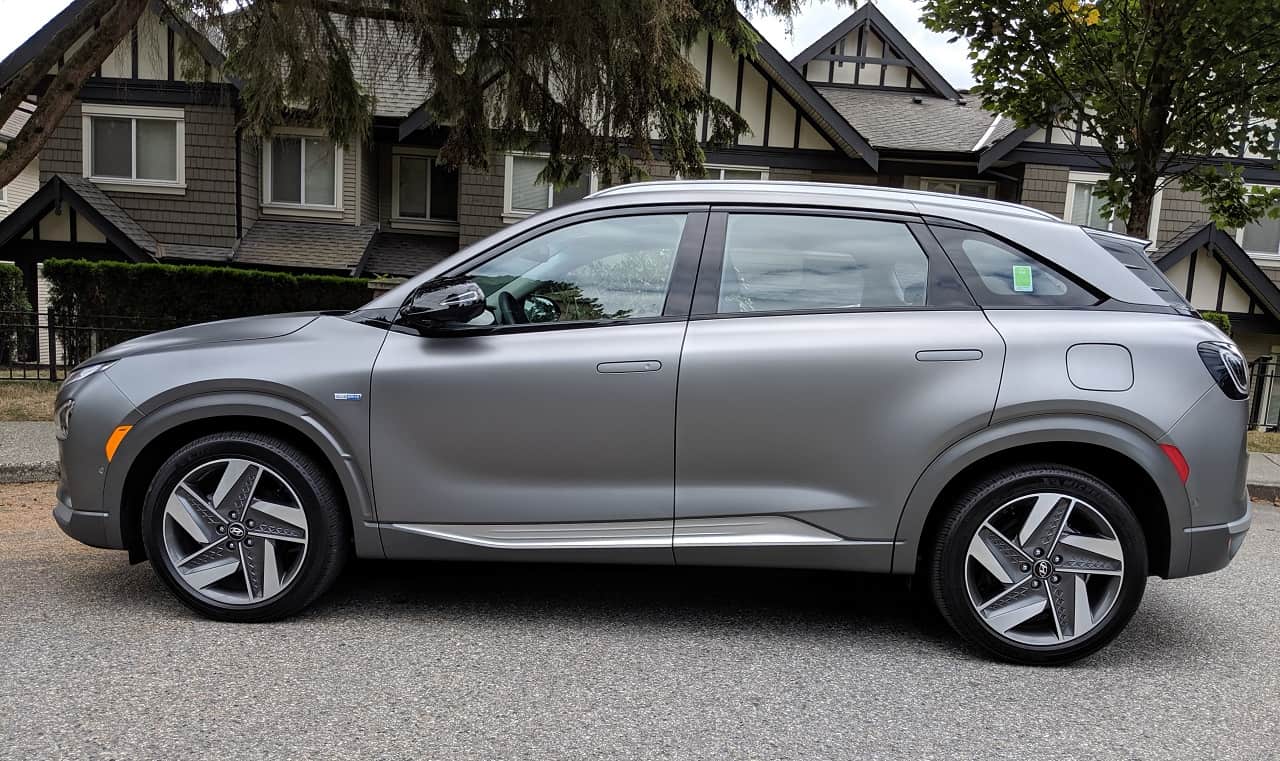
Styling is very subjective and everyone’s taste is different; I personally like the way the Nexo looks. It’s futuristic looking, but not so much that it just looks different for the sake of looking different. The other two hydrogen vehicles fall in the category of “look at me, I’m something different”.
The overall shape of the Nexo is like a traditional crossover, with a face that’s recognizably Hyundai but you know it’s different enough to warrant a second look. Our review car had the matte grey paint, which is also very eye catching; for the five days I had the Nexo, it was turning heads everywhere I went.
The Nexo comes with flush-mounted door handles, which automatically open up as you approach the vehicle with the key fob in your pocket. These can also be opened by touching the flush-mounted door handles and pushing of a button on the key fob.
Interior
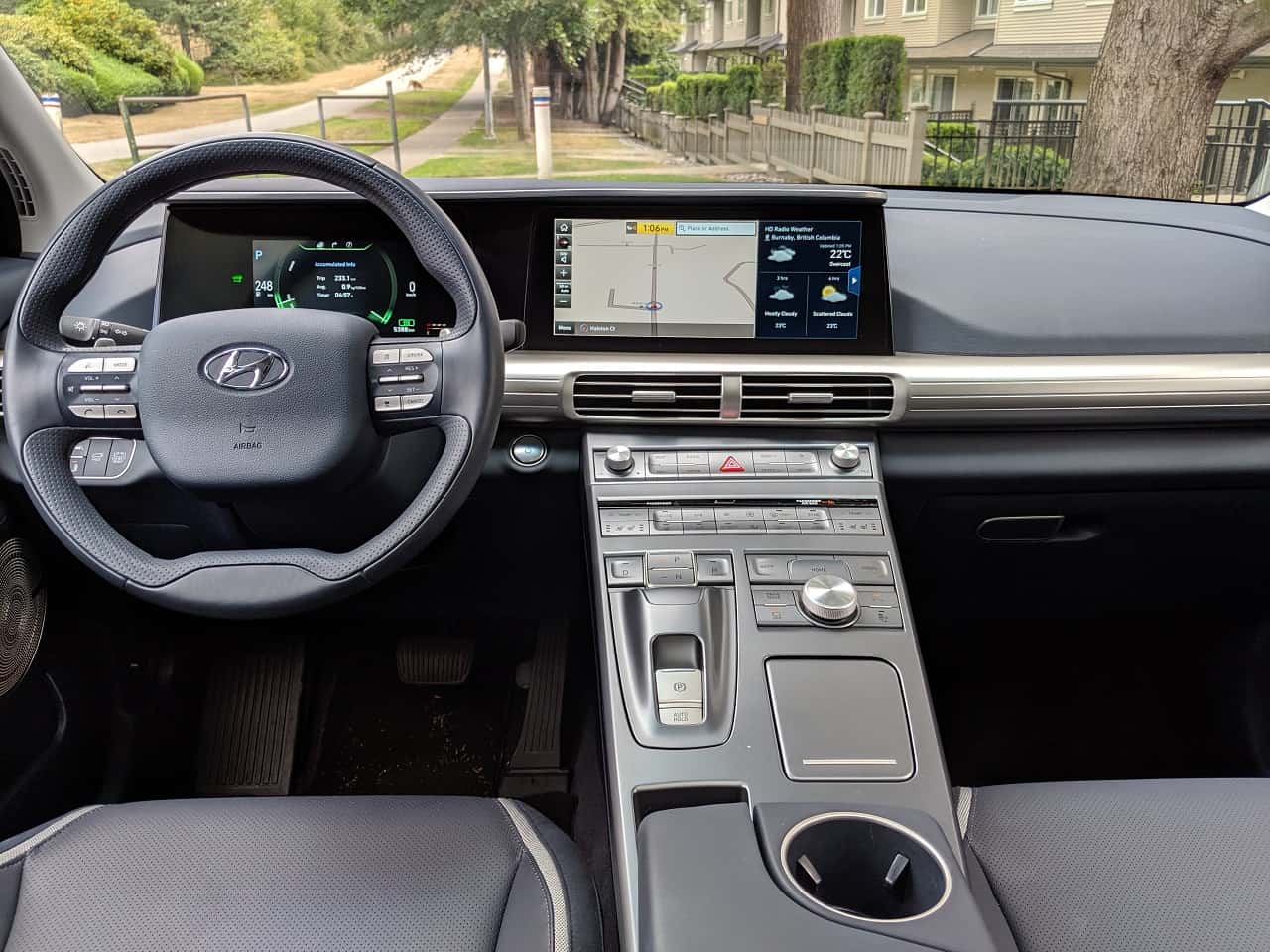
I call the interior on the Nexo “The Anti-Tesla”, it is everything the Tesla Model 3’s isn’t. There are lots of buttons, some might think there are too many, but not me. I personally loved the layout of the interior with all those buttons placed on a sloping downwards center console. To me, it looked very futuristic, others might disagree with me, I felt like I was piloting the USS Enterprise (or one of those space ships from Star Trek, I didn’t really watch many of the shows).
All these buttons give you access to the navigation screen, the radio, media, different settings in the climate control, driving modes, different camera views, parking assist, and gear selections for the transmission (P, R, N, D).
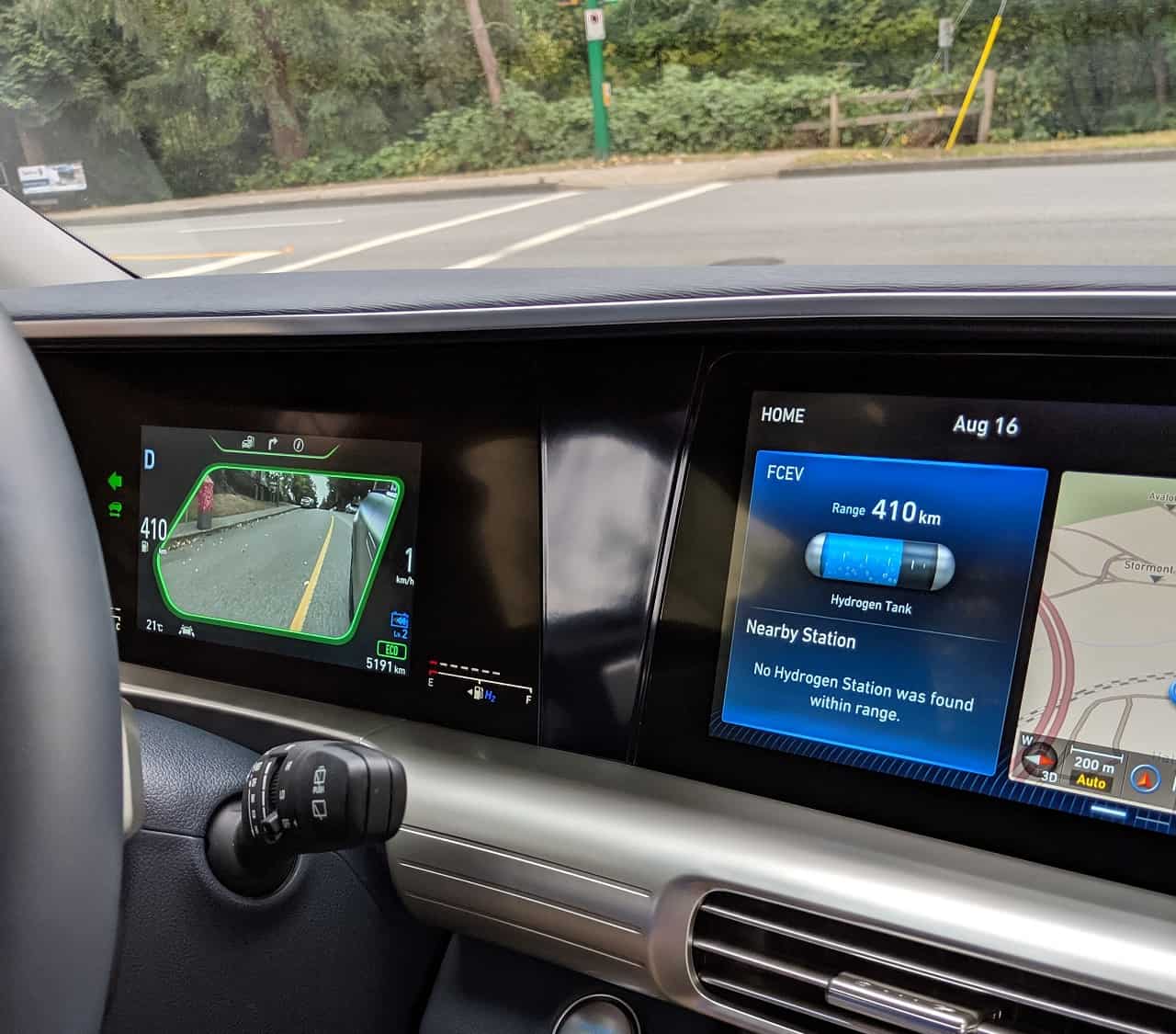
Not to be outdone by Tesla, the Nexo is also home to some very large screens and touchscreens. Behind the steering wheel is a 7” TFT screen that displays multiple outputs and can be changed to display different things. This screen also displays images from the blind spot on both sides when the signal indicator is on, kind of like Honda’s LaneWatch. There’s also a 12.3” infotainment screen that looks absolutely massive and works very well and is very responsive to the touch.
The interior is nicely appointed with soft touch materials, brushed aluminum, and blue-ish leather on our test car. This leather treatment gave the interior a nautical feel, maybe because it produces water?
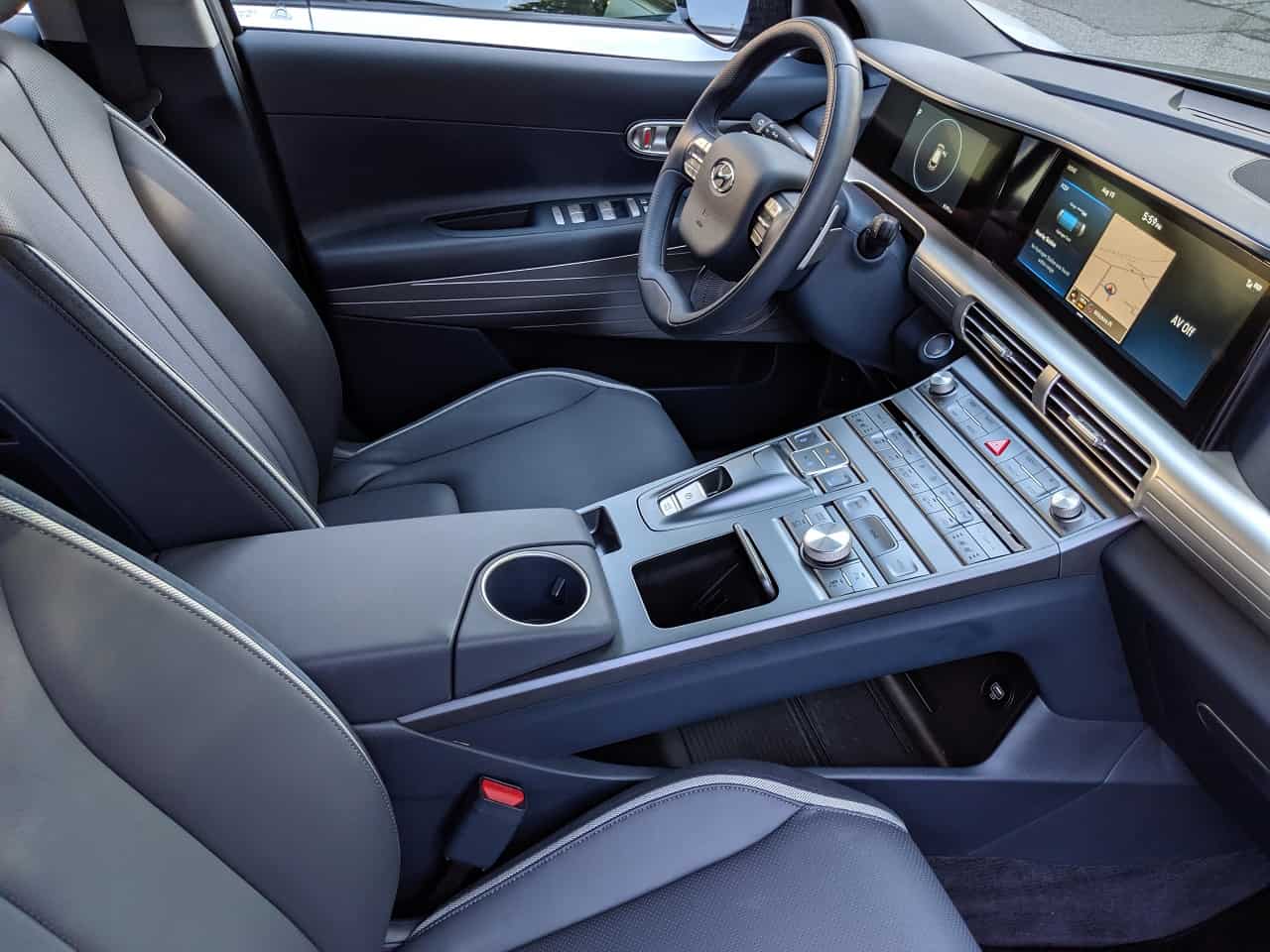
The interior is very quiet, I found the interior to be noisy on the Kona Electric at higher speeds, but that’s not the case with the Nexo. It’s a much more luxurious setting and there’s lots of sound deadening, not much wind noise enters the cabin even at highway speeds.
The interior is also very roomy, I found the heated/cooled front seats to be very comfortable and easy to adjust to a good driving position. The rear seats are also very comfortable with a surprisingly large amount of leg room.
I would have liked to see a HUD display, this is a flagship vehicle for Hyundai, I think putting in a HUD would make sense. I also found the lack of auto up/down windows (other than the driver’s window) a bit weird, so much money is spent on so many cool features on this car, I think having auto up/down windows should be a no brainer.
Technology/Safety/Convenience Features
The technology features I’ve mentioned above are impressive enough on their own, but the Nexo comes with a fair bit more. Features like self-parking, not the type where you sit in the car and it parallel parks by itself (which is an impressive feature on its own and the Nexo has it), but where you can stand outside the vehicle and by pressing the remote, the Nexo will automatically back into a parking spot, going back and forth to adjust its position relative to the parking lines, were quite a hit with kids and adults. I actually found this feature very useful, with two small children and tight parking spots, I would take the kids out of the car first and then have it automatically back into the parking spot, without fear of dinging the doors against other cars.
The Nexo can also be parallel parked without the driver being in the car, by holding the key fob close to the vehicle as it parks itself.
Other features on the Nexo are more “traditional” and we’ve seen them before on other vehicles, features like heated/cooled seats, wireless charging, 360-degree cameras, forward collision-avoidance, lane keep assist, rear cross-traffic alert and collision avoidance, blind spot monitoring and collision-avoidance, automatic cruise control, navigation, Bluetooth connectivity, and much more. For more information on the Nexo, check out this Nexo online brochure.
Overall Impressions
I have been a believer in Hydrogen Fuel-Cell Vehicles for a very long time, I always thought hydrogen was going to win against electric vehicles. However, thanks to Tesla, BEVs have a good head start but there’s still hope for hydrogen vehicles and it doesn’t have to be either or, we might have a future with both forms of transportation.
I personally really enjoyed my time with the 2019/2020 Hyundai Nexo, I think it is a fantastic vehicle with a lot of cool technology and features. It is currently very expensive, but when the Tesla Roadster and Model S came out, they were expensive vehicles too (they still are but cheaper BEVs are also available now).
I think hydrogen fuel cell vehicles have a bright future ahead, there are a few things that are getting in the way of mass adoption, things like the cost of the vehicle, limited availability of fueling stations, and the price of hydrogen itself. But that doesn’t mean things should stay this way forever, as more and more infrastructure becomes available and more FCEVs are offered by manufacturers, prices should come down (fingers crossed).
